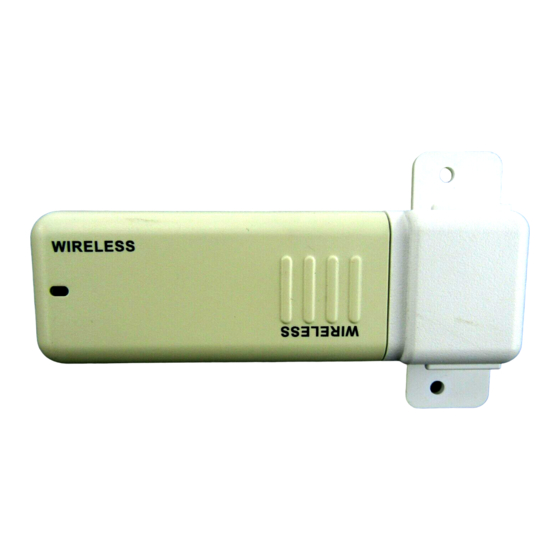
Advertisement
Advertisement

Subscribe to Our Youtube Channel
Summary of Contents for NEC NP01LM Series
- Page 1 NP01LM USB Wireless LAN Unit Installation Guide...
- Page 2 Federal Communication Commission Interference Statement This equipment has been tested and found to comply with the limits for a Class B digital device, pursuant to Part 15 of the FCC Rules. These limits are designed to provide reasonable protection against harmful interference in a residential installation. This equipment generates, uses and can radiate radio frequency energy and, if not installed and used in accordance with the instructions, may cause harmful interference to radio communications.
- Page 3 Because high power radars are allocated as primary users (meaning they have priority) in 5250-5350 MHz and 5650-5850 MHz, these radars could cause interference and/or damage to license exempt LAN devices. IMPORTANT NOTE: IC Radiation Exposure Statement: This equipment complies with IC radiation exposure limits set forth for an uncontrolled environment. End users must follow the specific operating instructions for satisfying RF exposure compliance.
-
Page 4: Table Of Contents
Table of Contents Introduction ..........................5 Operating Requirements ......................5 Windows XP..........................6 Installation (First-Time Installation)..................6 Using the configuration Utility ..................11 Technical Specifications....................15... -
Page 5: Introduction
1. Introduction NP01LM Series offers performance comparable to an Ethernet Local Area Network (LAN) system, without the limitations of network cables. It allows you to connect your computer to a Local Area Network from anywhere within the wireless coverage area. It also enables you to roam throughout the network while remaining connected to the LAN. -
Page 6: Windows Xp
2. Windows XP This chapter describes the Windows XP driver installation. Caution Windows XP operating systems require computer administrator privileges to install software. Be sure that you have such privileges before executing the Setup.exe file. Installation (First-Time Installation) This section describes first-time installation of the driver and utility for Windows XP. To install the Client Utility and driver (first-time installation) For initial installation, the Setup.exe file should be run before the Wireless LAN Card is physically installed in your computer. - Page 7 3. Choose “Ralink Configuration To [recommended]”. Click Next to continue. 4. Choose the “Optimize for WiFi mode”. Click Next to continue.
- Page 8 5. The setup process screen shows up 6. Click Finish when the setup Wizard is finished.
- Page 9 To install USBWireless LAN Unit physically (first-time insertion) Insert the USB Wireless LAN Unit into the USB slot of the personal computer and follow these steps to install the driver: 1. Wait for the Found New Hardware Wizard dialog box to display. With the Windows XP Service Pack 2 (SP2), the following dialog box is displayed.
- Page 10 3. The driver is installed. Click Continue Anyway to proceed with driver installation. 4. Click Finish to complete driver installation.
-
Page 11: Using The Configuration Utility
3. Using the configuration Utility Use the Ralink Wireless Utility to configure the device driver. The Client Utility provides extensive online help to aid in configuring the device. To start the Ralink Wirelss Utility is to click on Start->All Program->Ralink Wireless->Ralink Wireless Utility. - Page 12 Configurations Link Status Displays the information of the access point to which Wireless LAN adapter is associated. Site survey Display the list of available newtworks...
- Page 13 Statistics Display the network connection information.
- Page 14 About Display the version information. Cautions Cautions on security when using wireless LAN products With a wireless LAN, radio waves are used instead of LAN cables for the exchange of data between the wireless access points (computers, etc.), offering the advantage that LAN connections can be made freely within the range of the radio waves.
-
Page 15: Technical Specifications
4. Technical Specifications 1. Standard USB 2.0 IEEE 802.11a, IEEE 802.11g, IEEE 802.11b 2. Bus Type USB 2.0 3. Temperature Operating 0 to 45 C(32 to 113 ° ° Storing -20 to 75 C(4 to 167 ° ° 4. Humidity 80% maximum, non-condensing 5. - Page 16 12. Weight © NEC Display Solutions, Ltd. 2007 First edition April 2007 Reproduction, modification, and other uses are prohibited without the permission of NEC Display Solutions, Ltd.






Need help?
Do you have a question about the NP01LM Series and is the answer not in the manual?
Questions and answers